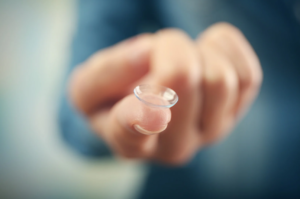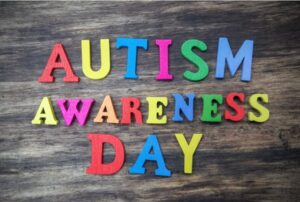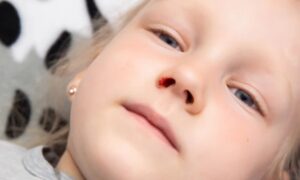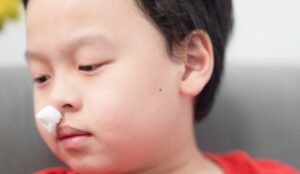Pink eye, or conjunctivitis, is a common condition in children. It can be caused by viruses, bacteria, allergies, or irritants. While it’s always best to consult a doctor, there are several home remedies that may help ease the symptoms and speed up the recovery process. Here are some of the most effective home treatments for pink eye in kids.
1. Warm Compress for Soothing Relief
A warm compress can help relieve discomfort caused by pink eye. It reduces swelling and helps clear out discharge from the eyes.
- How to Use: Take a clean washcloth and soak it in warm (not hot) water. Wring out the excess water and gently place it over your child’s closed eyes for 5-10 minutes.
- Why It Works: The warmth helps loosen any crust that may have formed around the eyes and reduces inflammation.
2. Cold Compress for Reducing Swelling
If your child’s eyes are very swollen, a cold compress might be more helpful. This can reduce inflammation and provide relief from itching or irritation.
- How to Use: Use a clean washcloth soaked in cold water or wrap ice cubes in a cloth. Gently press it against your child’s eyes for 5-10 minutes.
- Why It Works: Cold temperatures reduce blood flow to the area, which can decrease swelling and relieve discomfort.
3. Saline Solution to Clean the Eyes
A saline solution can help wash away any irritants, allergens, or discharge from the eyes. It is a simple and safe remedy for children.
- How to Use: Use a store-bought saline solution or make your own by mixing 1 teaspoon of salt in a cup of warm, boiled water. Gently flush the eyes with the solution using a dropper or clean cotton ball.
- Why It Works: Saline helps to keep the eyes moist and removes any debris that might be causing irritation.
4. Keep the Eyes Clean and Dry
Keeping your child’s eyes clean is essential in managing pink eye. This prevents further irritation and keeps the eyes from becoming more infected.
- How to Do It: Gently wipe away any discharge from the eyes with a clean tissue or cotton ball. Always wash your hands thoroughly before and after cleaning the eyes.
- Why It Works: This prevents the spread of infection and helps prevent further irritation.
5. Use Over-the-Counter (OTC) Artificial Tears
Artificial tears are available at pharmacies and can help moisturize dry, irritated eyes. These can be useful for children with pink eye caused by allergies or dryness.
- How to Use: Apply the drops as directed on the label. It’s important to use a new bottle of drops each time to avoid spreading infection.
- Why It Works: Artificial tears provide moisture, which can help soothe the eyes and reduce redness.
6. Avoid Eye Rubbing
Encouraging your child not to rub their eyes is essential for preventing the spread of infection and worsening symptoms.
- How to Do It: Gently explain to your child that rubbing their eyes can make things worse. You may also want to make sure your child’s hands are clean to avoid contamination.
- Why It Works: Rubbing the eyes can spread bacteria or viruses, leading to further irritation and possibly infecting others.
7. Ensure Proper Hygiene
Good hygiene is crucial to preventing the spread of pink eye, especially if it’s caused by bacteria or viruses.
- How to Do It: Have your child wash their hands often, especially before touching their face or eyes. Avoid sharing towels, pillows, or anything that might come into contact with their eyes.
- Why It Works: Proper hygiene reduces the risk of spreading the infection to others and prevents re-infection.
8. Use Natural Remedies for Allergic Pink Eye
If pink eye is caused by allergies, natural remedies can help reduce symptoms.
- How to Do It: Try using aloe vera gel around the eyes or chamomile tea bags as a compress to soothe the eyes. You can also give your child allergy medicine if directed by a healthcare provider.
- Why It Works: Aloe vera has anti-inflammatory properties, and chamomile is known for its soothing effects. These natural ingredients help calm irritated eyes.
9. Keep Your Child’s Environment Allergen-Free
If allergies are causing the pink eye, try to keep your child’s environment clean and free from allergens.
- How to Do It: Regularly clean the home, especially the areas where your child spends most of their time. Use allergen-free bedding, and keep windows closed on windy days when pollen levels are high.
- Why It Works: Reducing exposure to allergens can prevent the allergic reaction that causes pink eye from getting worse.
10. Rest and Hydration
Pink eye can make your child feel tired and run down. Ensuring they get enough rest and stay hydrated is important for their overall health and recovery.
- How to Do It: Encourage your child to rest and drink plenty of fluids like water, herbal tea, and soup.
- Why It Works: Proper rest and hydration help boost the immune system, making it easier for the body to fight off infection and heal faster.
When to See a Doctor
While home remedies can provide relief, it's important to consult a healthcare provider if:
- The symptoms worsen or don't improve after a few days.
- There is severe pain, sensitivity to light, or blurred vision.
- Your child has a weakened immune system or a pre-existing eye condition.
References
- American Academy of Ophthalmology. "Pink Eye (Conjunctivitis)." aao.org
- Centers for Disease Control and Prevention. "Conjunctivitis (Pink Eye)." cdc.gov
- Mayo Clinic. "Pink Eye (Conjunctivitis) Treatment." mayoclinic.org
- National Institutes of Health. "Pink Eye (Conjunctivitis) Causes and Treatments." nih.gov
- WebMD. "Home Remedies for Conjunctivitis." webmd.com













